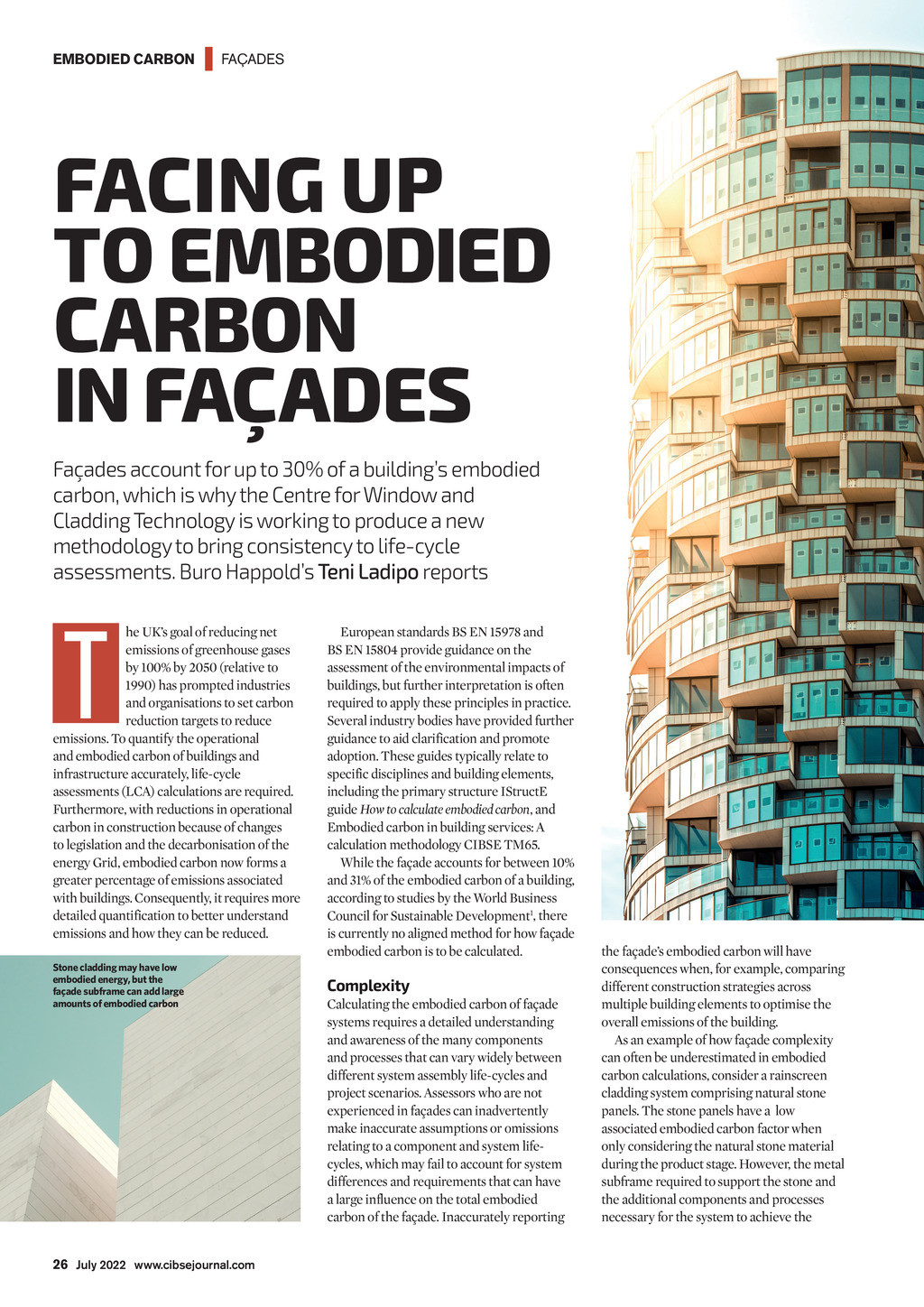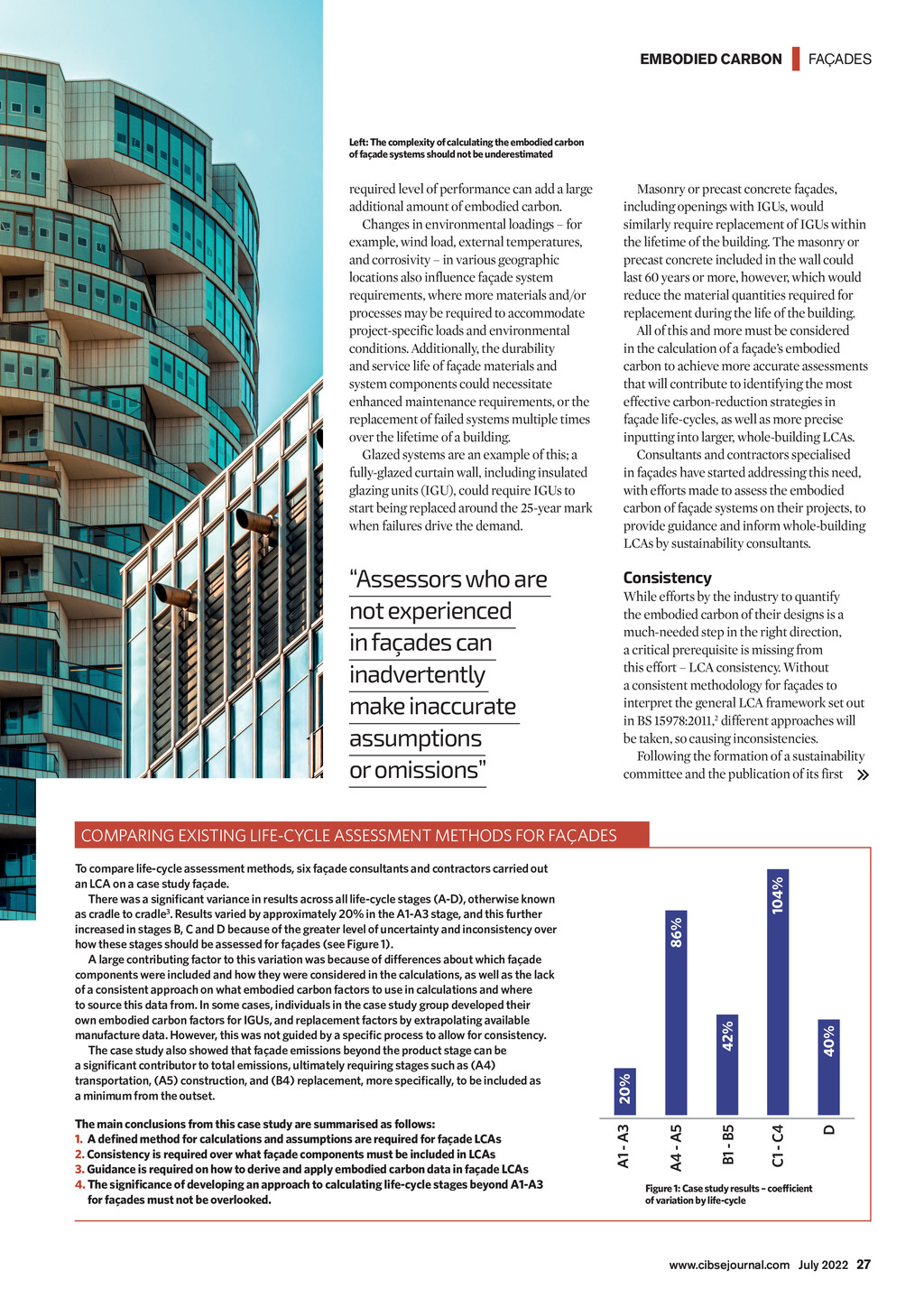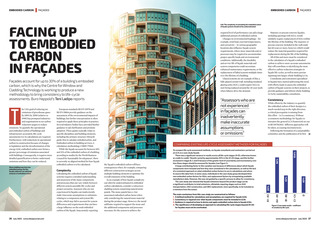




EMBODIED CARBON | FAADES FACING UP TO EMBODIED CARBON IN FAADES Faades account for up to 30% of a buildings embodied carbon, which is why the Centre for Window and Cladding Technology is working to produce a new methodology to bring consistency to life-cycle assessments. Buro Happolds Teni Ladipo reports T he UKs goal of reducing net emissions of greenhouse gases by 100% by 2050 (relative to 1990) has prompted industries and organisations to set carbon reduction targets to reduce emissions. To quantify the operational and embodied carbon of buildings and infrastructure accurately, life-cycle assessments (LCA) calculations are required. Furthermore, with reductions in operational carbon in construction because of changes to legislation and the decarbonisation of the energy Grid, embodied carbon now forms a greater percentage of emissions associated with buildings. Consequently, it requires more detailed quantification to better understand emissions and how they can be reduced. Stone cladding may have low embodied energy, but the faade subframe can add large amounts of embodied carbon European standards BS EN 15978 and BS EN 15804 provide guidance on the assessment of the environmental impacts of buildings, but further interpretation is often required to apply these principles in practice. Several industry bodies have provided further guidance to aid clarification and promote adoption. These guides typically relate to specific disciplines and building elements, including the primary structure IStructE guide How to calculate embodied carbon, and Embodied carbon in building services: A calculation methodology CIBSE TM65. While the faade accounts for between 10% and 31% of the embodied carbon of a building, according to studies by the World Business Council for Sustainable Development1, there is currently no aligned method for how faade embodied carbon is to be calculated. Complexity Calculating the embodied carbon of faade systems requires a detailed understanding and awareness of the many components and processes that can vary widely between different system assembly life-cycles and project scenarios. Assessors who are not experienced in faades can inadvertently make inaccurate assumptions or omissions relating to a component and system lifecycles, which may fail to account for system differences and requirements that can have a large influence on the total embodied carbon of the faade. Inaccurately reporting the faades embodied carbon will have consequences when, for example, comparing different construction strategies across multiple building elements to optimise the overall emissions of the building. As an example of how faade complexity can often be underestimated in embodied carbon calculations, consider a rainscreen cladding system comprising natural stone panels. The stone panels have a low associated embodied carbon factor when only considering the natural stone material during the product stage. However, the metal subframe required to support the stone and the additional components and processes necessary for the system to achieve the 26 July 2022 www.cibsejournal.com CIBSE July 22 pp26-28 Embodied energy facades.indd 26 24/06/2022 15:18